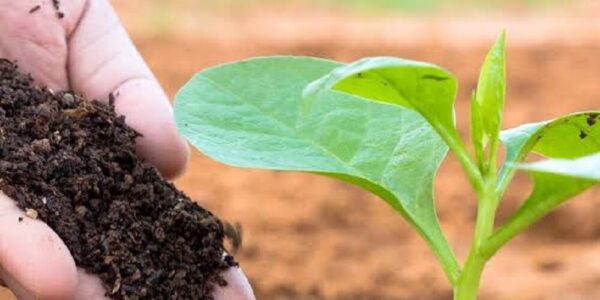Vermicomposting – The Wonderful World of Worms
Vermicomposting, unlike other composting that relies on bacteria and fungi to break down organic matter, vermicomposting uses worms to compost. The worms can break down the organic matter much faster than the bacteria and fungi alone, which makes vermicomposting a very efficient way to compost. In addition, worms produce castings (worm manure) that are richer in nutrients and beneficial microorganisms, which makes them an excellent fertilizer for plants.
Vermicomposting is an eco-friendly procedure that recycles biomass and wastes of organic matter into compost which has valuable nutrient content. Vermicomposting practice should be encouraged everywhere and by everyone for the nature-friendly management of waste.
Vermicomposting is not a new concept; it has been around for centuries. The earliest recorded use of vermicomposting was in ancient China where worms were used to break down human waste.
* Click to Follow Voice of Ladakh on WhatsApp *
Vermicomposting really began to take off in the 1970s when it was discovered that worms could be used to process sewage and other organic waste. Mary Appelhof considered the pioneer of vermicomposting in the United States, wrote the first book on the subject, “Worms Eat My Garbage”, in 1982. Since then, vermicomposting has become a popular way to compost all over the world.
In Kargil District it was first introduced by Krishi Vigyan Kendra (KVK), Kargil –I in 2015-16 and now it has become popular among the farmer of the district, particularly among female farmers. They have used the compost in the vegetable field and sell to the local farmers and concerned departments.
Vermicomposting has immense uses in a society where agriculture is the main source of living and for those too who love terrace farming and pot flowers. It can be practiced even by small families by using kitchen scrap and cardboard like egg trays, farmers who use manure can use vermicomposting on large-scale, by using the husks, grasses, and leftovers of the vegetables and fruit and cow dung and cow urine.
There are seven types of worms that can be used for vermicomposting: Eisenia fetida (red wiggler), Eisenia hortensis/Dendrobaena veneta (European nightcrawler), Eisenia andrei (red tiger), Lumbricus rubellus (red earthworm), Perionyx excavates (blue worm), Eudrilus eugeniae (African nightcrawler), and the Amynthas gracilis (Alabama or Georgia jumper). Each type of worm has its own unique set of benefits that make it ideal for vermicomposting.
The Eisenia fetida (red wiggler) is the most popular type of worm used for vermicomposting. They are small, easy to care for and reproduce quickly particularly in summer and on fruit peels. Red wigglers may be able to consume their own weight in food every day (only in optimal conditions) and produce castings that are high in nutrients.
How to vermicompost?
There are two methods of vermicomposting, vermicomposting in bins at small scale and in pit at large scale. Here I shall discuss the vermicomposting in bins with the hope that one and all households would have a vermicomposting bin in their backyard or garage or on the terrace and so on. For the bin, any container can be used preferably plastic bins.
A vermicomposting bin may be in different sizes and shapes, but its height should be more than 1 foot. The old cracked bucket or empty wall paint pail is ideal for bin vermicomposting. Drain some holes in the bottom, sides, and lid of the bins for aeration and drainage. Do not put to feed the worms directly, it needs to apply the worm bed before putting the worms in the bucket. The bed may be of a mixture of shredded paper, mature compost old cow dung with some soil up to 25 cm, and put the bin in a shaded area and supply water frequently. Do not apply too much water; just moisten the composting material, and as the volume decreases, add the feeding material to the bucket. In a period of 2-5 months the compost will be ready (depending on the season). The material will become moderately loose, will weigh less, and shaped like granules, black in color, crumbly, and rich with humus.
Harvesting of compost:
Before harvesting or emptying of bucket stop watering the compost bin. This help in the separation of the worms from the compost. Dump the content on a polythene sheet or on the floor and make it a cone-shaped pile. Worms left in the compost will move away from the light as they do not like light, towards the bottom of the pile, thus it makes it easy to the separation of the worms. Gently remove the top layer of the compost from the pile until you see the worms. After proper separation of worms put the worm back into the bins with the composting material as mentioned above.
Use of compost:
Now you can use the nutrient-rich compost for your plants. The compost will help conditions your soil and also add nutrient and beneficial microorganism. The harvested compost will be damp, lumpy, and clay-like. You can add them directly to your plants or let them dry out to store. When it dried, it becomes a fine-grained product.
This is a very easy and wonderful process to dispose the garbage and create healthy compost.
Hope you will give it a try.
2 Comments
Leave a Reply

Vermicompost is the bright future in India. I am also interested in this field for generating the compost on commercial basis
Vermicomposting is one of the best known technologies available at present for proper handling of biowastes. It is an alternative approach in waste management and is compatible with sound environmental principles that value conservation of resources and sustainable practices.. Inspite of all the benefits, some farmers are reluctant to enter into this field, saying that it is time-consuming..So, I feel that it would be great if we can give special attention to work on establishing methods of accelerating this process…